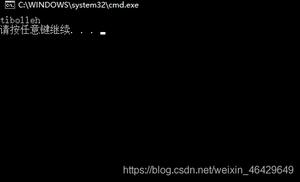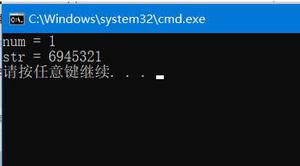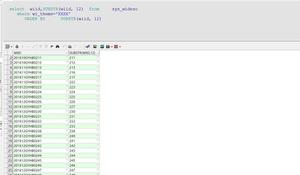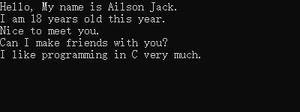C ++程序中所有单词串联的子字符串
假设我们有一个字符串s,并且还有一个单词列表,数组中存在的单词长度都相同。我们必须找到s中所有子字符串的起始索引,该索引是每个单词在单词中的连接,且一次没有任何中间字符。
因此,如果输入像“ barfoothefoobarman”,而单词是[“ foo”,“ bar”],那么输出将是[0,9]。这是因为从索引0和9开始的子字符串是“ barfoo”和“ foobar”。
为了解决这个问题,我们将遵循以下步骤-
定义一个名为的方法
ok(),它将采用字符串s,映射wordCnt和n-将s复制到临时文件
对于范围在n到s的i – 1
如果在wordCnt中不存在temp时,则返回false
除此以外
如果wordCnt [temp]为1,则从wordCnt删除temp,将temp设置为空字符串
否则,将wordCnt [temp]的值减小1,将temp设置为空字符串。
如果temp的大小是0的倍数,则
将温度提高s [i]
如果temp不在wordCnt中,则返回false
除此以外
如果wordCnt [temp]为1,则从wordCnt删除temp,将temp设置为空字符串
否则,将wordCnt [temp]的值减小1,将temp设置为空字符串。
当wordCnt的大小为0时返回true
从主要方法中,执行此操作
如果a的大小为0,或b的大小为0,则返回空数组
制作一个映射wordCnt,将b中存在的字符串的频率存储到wordCnt中
制作一个称为ans的数组
窗口:=单词数x每个单词中的字符数
将字符串a的一个副本复制到temp
对于范围窗口中的我,其大小为– 1
将i –窗口插入ans
如果临时大小可以被窗口整除并调用ok(temp,wordCnt,b [0]的大小),则
在温度中插入a [i]
如果temp的大小> window,则从0,1删除子字符串
如果临时大小可以被窗口整除并调用ok(temp,wordCnt,b [0]的大小),则
在窗口中插入一个–窗口的大小
返回ans
例
让我们看下面的实现以更好地理解-
#include <bits/stdc++.h>using namespace std;
void print_vector(vector<auto> v){
cout << "[";
for(int i = 0; i<v.size(); i++){
cout << v[i] << ", ";
}
cout << "]"<<endl;
}
class Solution {
public:
bool ok(string s, unordered_map <string, int> wordCnt, int n){
string temp = "";
for(int i = 0; i < n; i++){
temp += s[i];
}
for(int i = n; i < s.size(); i++){
if(temp.size() % n == 0){
if(wordCnt.find(temp) == wordCnt.end())return false;
else{
if(wordCnt[temp] == 1){
wordCnt.erase(temp);
temp = "";
}
else{
wordCnt[temp]--;
temp = "";
}
}
}
temp += s[i];
}
if(wordCnt.find(temp) == wordCnt.end())return false;
else{
if(wordCnt[temp] == 1){
wordCnt.erase(temp);
temp = "";
}
else{
wordCnt[temp]--;
temp = "";
}
}
return wordCnt.size() == 0;
}
vector<int> findSubstring(string a, vector<string> &b) {
if(a.size() == 0 || b.size() == 0)return {};
unordered_map <string, int> wordCnt;
for(int i = 0; i < b.size(); i++)wordCnt[b[i]]++;
vector <int> ans;
int window = b.size() * b[0].size();
string temp ="";
for(int i = 0; i < window; i++)temp += a[i];
for(int i = window; i < a.size(); i++){
if(temp.size() % window == 0 && ok(temp, wordCnt, b[0].size())){
ans.push_back(i - window);
}
temp += a[i];
if(temp.size() > window)temp.erase(0, 1);
}
if(temp .size() % window ==0 && ok(temp, wordCnt, b[0].size()))ans.push_back(a.size() - window);
return ans;
}
};
main(){
vector<string> v = {"foo", "bar"};
Solution ob;
print_vector(ob.findSubstring("barfoothefoobarman", v));
}
输入值
1,2,3,4,5,6,73
输出结果
[0, 9, ]
以上是 C ++程序中所有单词串联的子字符串 的全部内容, 来源链接: utcz.com/z/321689.html








